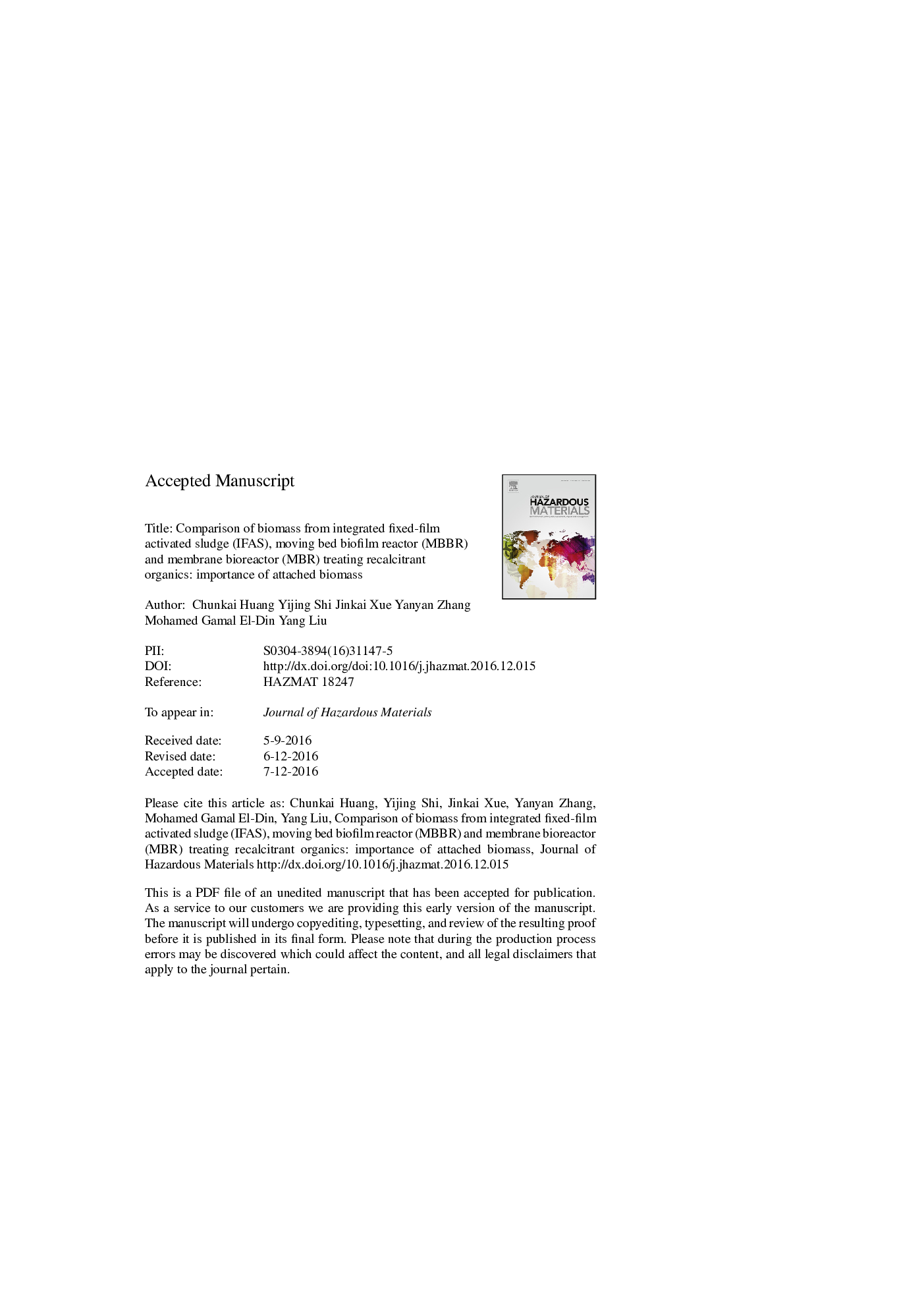| Article ID | Journal | Published Year | Pages | File Type |
|---|---|---|---|---|
| 4979767 | Journal of Hazardous Materials | 2017 | 42 Pages |
Abstract
This study compared microbial characteristics and oil sands process-affected water (OSPW) treatment performance of five types of microbial biomass (MBBR-biofilm, IFAS-biofilm, IFAS-floc, MBR-aerobic-floc, and MBR-anoxic-floc) cultivated from three types of bioreactors (MBBR, IFAS, and MBR) in batch experiments. Chemical oxygen demand (COD), ammonium, acid extractable fraction (AEF), and naphthenic acids (NAs) removals efficiencies were distinctly different between suspended and attached bacterial aggregates and between aerobic and anoxic suspended flocs. MBR-aerobic-floc and MBR-anoxic-floc demonstrated COD removal efficiencies higher than microbial aggregates obtained from MBBR and IFAS, MBBR and IFAS biofilm had higher AEF removal efficiencies than those obtained using flocs. MBBR-biofilm demonstrated the most efficient NAs removal from OSPW. NAs degradation efficiency was highly dependent on the carbon number and NA cyclization number according to UPLC/HRMS analysis. Mono- and di-oxidized NAs were the dominant oxy-NA species in OSPW samples. Microbial analysis with quantitative polymerase chain reaction (q-PCR) indicated that the bacterial 16S rRNA gene abundance was significantly higher in the batch bioreactors with suspended flocs than in those with biofilm, the NSR gene abundance in the MBR-anoxic bioreactor was significantly lower than that in aerobic batch bioreactors, and denitrifiers were more abundant in the suspended phase of the activated sludge flocs.
Keywords
Related Topics
Physical Sciences and Engineering
Chemical Engineering
Chemical Health and Safety
Authors
Chunkai Huang, Yijing Shi, Jinkai Xue, Yanyan Zhang, Mohamed Gamal El-Din, Yang Liu,
